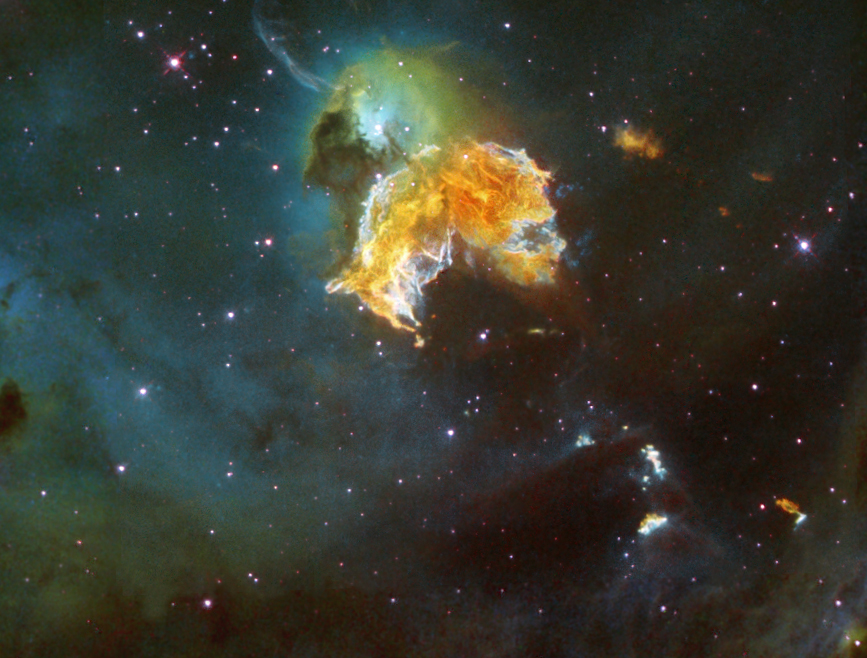Star Stuff
ω
Of starry stuff our lives were made
when supernova cloud cascade
in stellar burst of gases shed
with elements from which we’re bred
evolved to human escapade;
yet nature’s laws must be obeyed
so all that flourishes shall fade
for never-ending cosmic thread
of starry stuff;
mid vast celestial serenade
as music of the spheres portrayed
with majesty the stars o’erspread
create the living from the dead
in metamorphic masquerade
of starry stuff.
~ Harley White
* * * * * * * * * *
The poem is a rondeau…
“Our Sun is a second– or third-generation star. All of the rocky and metallic material we stand on, the iron in our blood, the calcium in our teeth, the carbon in our genes were produced billions of years ago in the interior of a red giant star. We are made of star-stuff.”
~ Carl Sagan, “The Cosmic Connection: An Extraterrestrial Perspective”, 1973
Article with image ~ Are We Really All Made of Stars?
Image ~ Supernova Remnant N 63A Menagerie…
Some inspiration derived from the teachings and writings of Nichiren Daishōnin…
Nam Myōhō Renge Kyō means to devote our lives to and found them on (Nam[u]) the Utterness of the Dharma (Myōhō) [entirety of existence, enlightenment and unenlightenment] permeated by the underlying white lotus flower-like mechanism of the interdependence of cause, concomitancy and effect (Renge) in its whereabouts of the ten [psychological] realms of dharmas [which is every possible psychological wavelength] (Kyō).
The reason that we continually recite Nam Myōhō Renge Kyō
Image explanation ~ A violent and chaotic-looking mass of gas and dust is seen in this Hubble Space Telescope image of a nearby supernova remnant. Denoted N 63A, the object is the remains of a massive star that exploded, spewing its gaseous layers out into an already turbulent region. The supernova remnant is a member of N 63, a star-forming region in the Large Magellanic Cloud (LMC). Visible from the southern hemisphere, the LMC is an irregular galaxy lying 160,000 light-years from our own Milky Way galaxy. The LMC provides excellent examples of active star formation and supernova remnants to be studied with Hubble. The Hubble image of N 63A is a color representation of data taken in 1997 and 2000 with Hubble's Wide Field Planetary Camera 2. Color filters were used to sample light emitted by sulfur (shown in red), oxygen (shown in blue), and hydrogen (shown in green).

Credit: NASA/ESA/HEIC/Hubble Heritage Team
| Table of Contents |
|